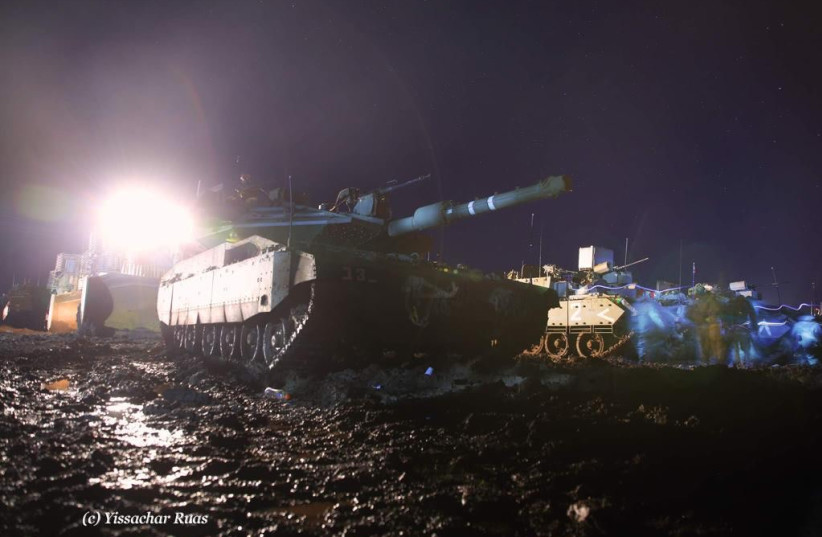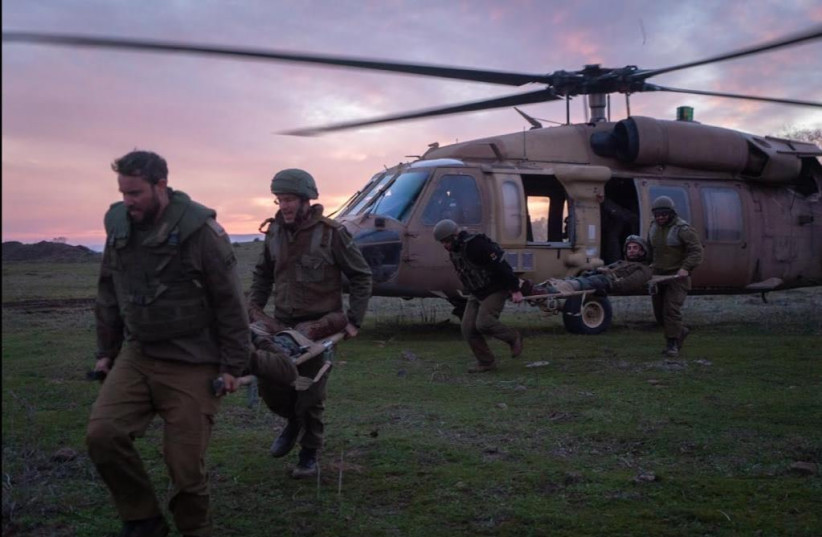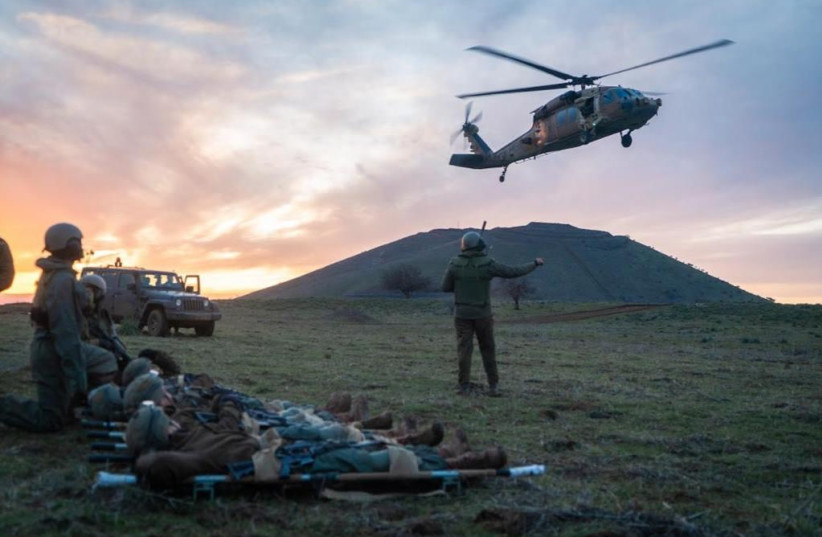In the middle of two harsh winter storms, the IDF’s 74th Armored Battalion conducted a large-scale drill and significantly improved its ability to go to war against Hezbollah.
The five-day exercise saw troops simulate combat against the Iran-backed terror group after a three-month training period in the Golan. The drill saw them practice combat methods in rocky terrain and in urban centers where soldiers will have to battle the group.
“The drill was long and complicated, with a number of technical operations that we worked on,” said Lt.-Col. Ofer Tchorz, commander of the 74th battalion, a part of the 188th Armored Brigade.
The challenges posed by the Israeli winter such as cold temperatures and rain, as well as challenges posed by the communication between maneuvering units are a central part of the drill that troops are training on.
Preparing for winter war

“The summer doesn’t influence tanks, but winter takes the drill to the next level,” he said, explaining that some of the tanks got stuck in the mud during the drill, needing to be removed by engineering platforms.
Having to carry out the drill during bad weather showed troops how to deal with the added challenges posed by such conditions should war break out with Hezbollah in the winter, Tchorz explained.
“We are preparing for war with Hezbollah in all weather conditions.”

Company Commander Cpt. Ofek Naaman from the 605th Combat Engineering Battalion told The Jerusalem Post that he and his troops trained during the two winter storms that hit Israel last month.
“It’s definitely a lot more challenging than the summer,” he said. “But I trained my troops during the last two storms that we had, so no doubt it was challenging but it’s not something my fighters did not experience. They handled it properly.”
What was more challenging, he said, was walking on the hilly terrain of the North.
“The area is full of hills and the ground was muddy,” he said. “The equipment is heavy and needed to be carried for a long period of time.”
Eyes on Hezbollah and the cold North
The IDF has been training in Israel’s Golan Heights for another war with Hezbollah, which over the years since the Second Lebanon War has morphed into an army with more advanced weaponry, is more mobile, able to draft large numbers of fighters and deploy them quickly in enemy territory.
Hezbollah has been described by senior military officers as the strongest army in the Middle East after the IDF.
Israel and Hezbollah fought a deadly 33-day war in 2006, which came to an end under UN Security Council Resolution 1701 that called for the disarmament of Hezbollah, withdrawal of the Israeli army from Lebanon, the deployment of the Lebanese army and an enlarged UN force in the South.

Combined arms of the IDF
“Compared to 2006, we fight in a joint formation, with artillery, infantry, engineering, air… everyone together,” Tchorz said. “When we close the gaps of the other, we become more effective and that’s a big difference. And the minute that we use the new technology, we are more precise, effective and lethal.”
“On the right there were infantry forces, on the left tanks and above me, there was the air force,” Naaman said. “They all work together; it’s challenging but very powerful.”
During the drill, the Tchorz’s tanks were joined by infantry units, combat engineers and artillery units, as well as the Israeli Air Force during parts of the exercise.
“Today, tanks are equipped with advanced technology that allows us to be in contact and move information to troops,” Tchorz said. “We are more effective, we can close the circle much better, quicker, and in a more precise manner than in the past.”
The challenges of war with Hezbollah
The IDF expects that in any future conflict, whether it be against Hezbollah in the North or Hamas in the South, soldiers will have to fight their heavily armed enemies entrenched in the middle of built-up civilian areas.
Troops will need to conquer enemy territory and destroy its weapons stores – especially rocket launchers, in order to minimize the number of missiles and rockets the enemy can fire at the home front.
According to Tchorz, the main challenges facing troops who will need to enter Lebanon are the hilly terrain and an enemy who fights from within residential areas and tries to hit IDF forces from there.
“We are training to deal with that,” he explained. “We are training to hit the enemy in a precise manner. We have the ability to hit the enemy very precisely, including when he is surrounded by innocent civilians.”
Though the defense establishment does not see a war breaking out with Iran or its proxies such as Hezbollah in Syria, Israel’s military has increased the amount of training for troops and reserve forces.
“At the peak of the drill, we were at a great level of readiness against the troops who acted as Hezbollah,” he said, referring to members of the all-female Red Unit that was formed in April 2020 who act as enemy forces during drills in order to better prepare troops to defend against offensive attacks.
Troops from the unit have four months of specialized training, including intensive studies on the enemies that surround Israel, specifically the threat posed by Hezbollah. The soldiers also have intelligence briefings and reviews where they are updated on what is happening on various fronts in order to constantly update their combat methods.
For Naaman, Hezbollah’s strength is not something to laugh at – and it’s for exactly that reason that forces are training for war against the group.
“I understand the enemy and study him; I expect that what I am training for will happen,” he said. “I understand that the enemy is strong and has abilities, that’s why we prepare as hard as we can to win.”
More training for the IDF this year
The IDF has held large-scale drills in the North of the country and plans to hold 50% more drills in the upcoming year than it did in 2020 and 30% more than last year.
The number of exercises set to happen come after years of stagnation and will be the largest training regimen in five years – especially for reserve forces.
The drills will prepare troops and commanders for future wars, using new equipment and tactics that will allow them to work better with the different branches of the military as part of the IDF’s multi-dimensional battlefield scenarios.
